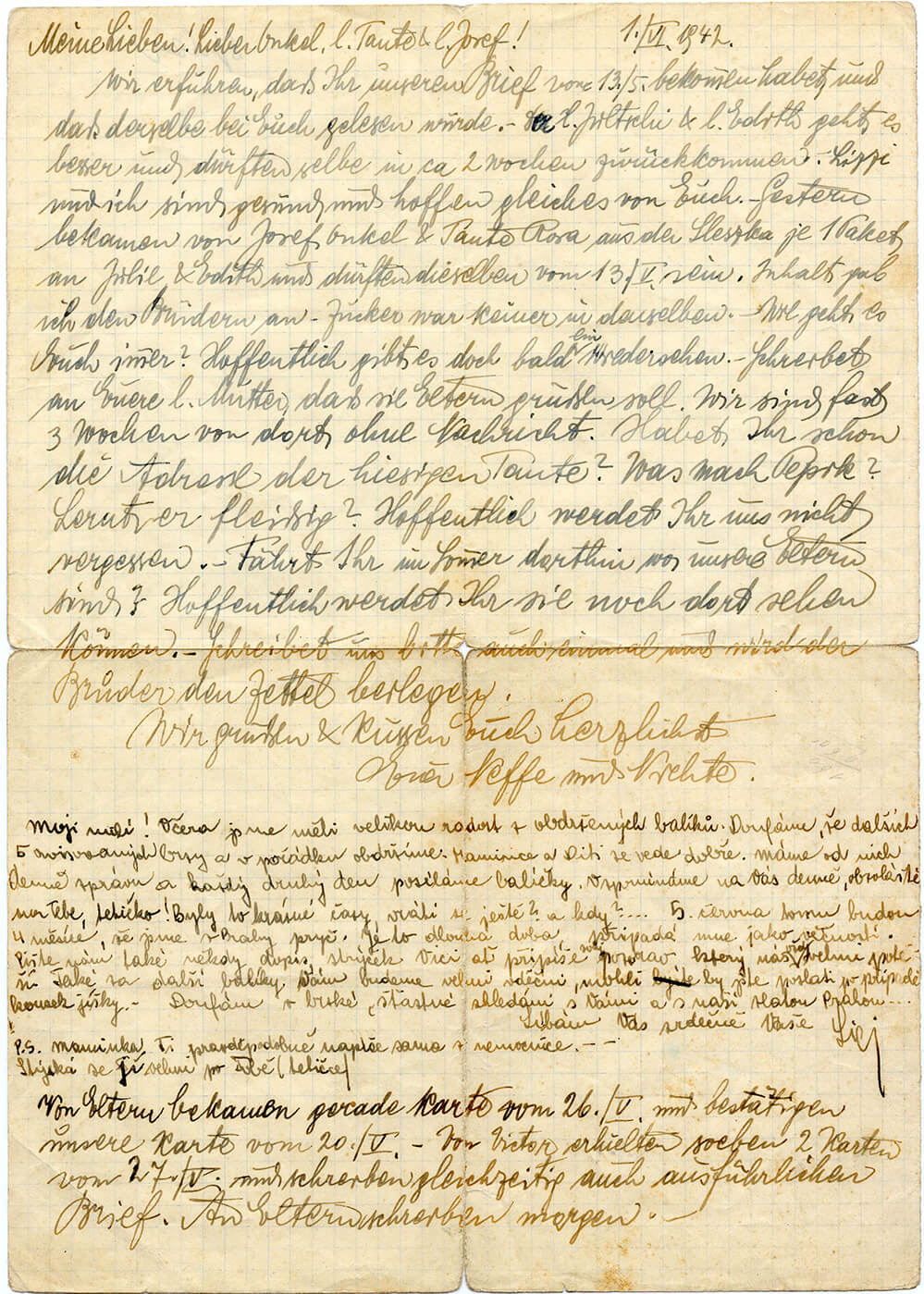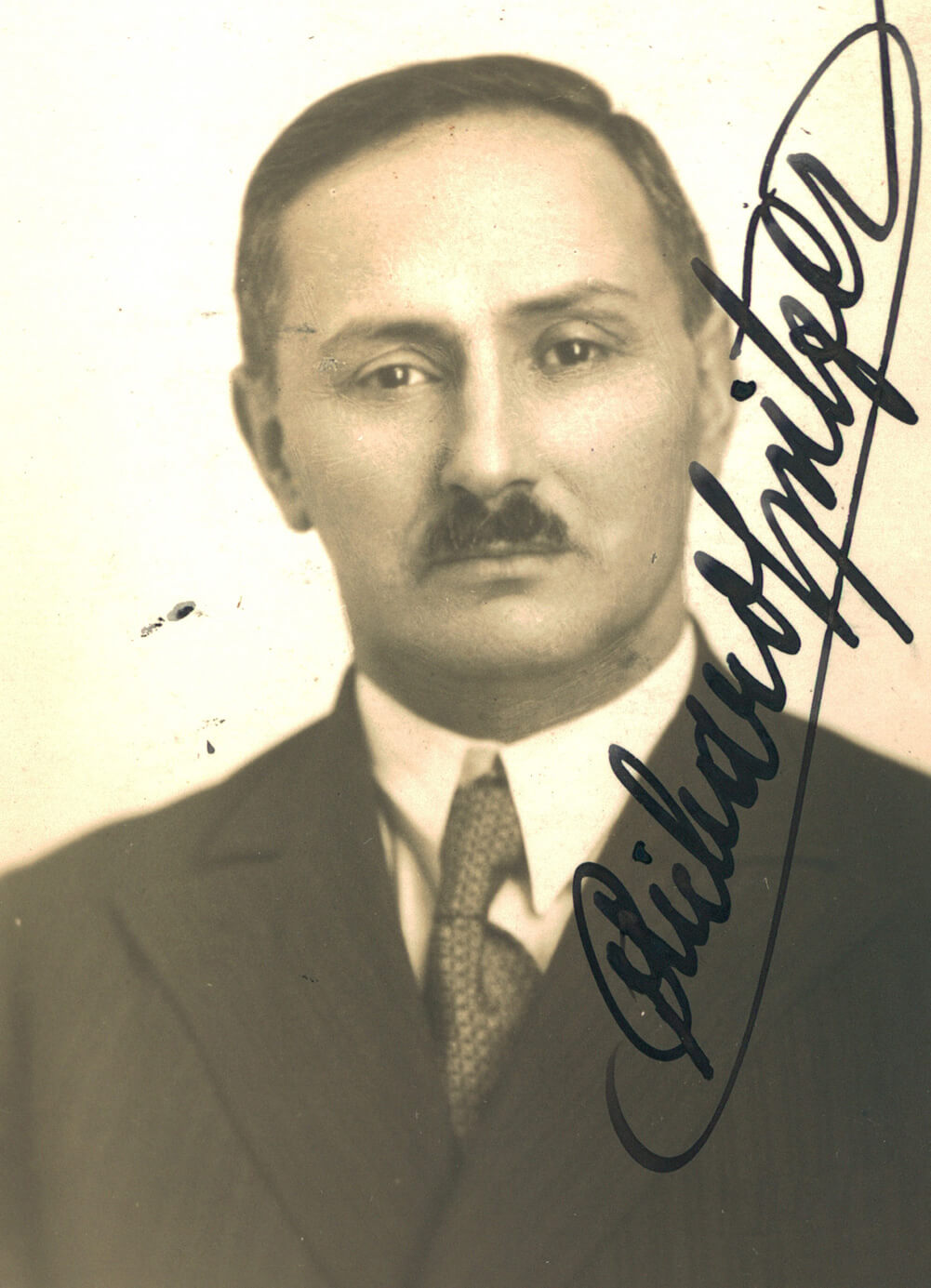Warsaw / Warschau

An illegal letter sent by the Spitzer family in Warsaw to relatives. The family had evidently been separated. The father, Richard (b. 1891) and eldest daughter Alice (b. 1926) write that their mother Julie (b. 1901) and the youngest daughter Edita (b. 1930) were apparently faring better and that they might be returning in two weeks. They also express their thanks for the parcels. Alice writes: “ …I hope to see you and our golden Prague happily soon…” The entire family perished.
Jewish Museum in PragueIn November 1940 the Nazis established a ghetto in the centre of the former Jewish quarter with a high wall around it. The ghetto was later divided into three sections and, in effect, became a labour camp. The catastrophic overcrowding (more than 410,000 inhabitants), poor hygienic conditions, and lack of food and fuel led to a high mortality rate. Many people died on the streets. Mass deportations to extermination camps started in July 1942. By the end of the year, only about 60,000 Jews remained alive in the ghetto. The German units that began the liquidation of the ghetto on 16 April 1943 came up against strong resistance. In flames and in ruins, the ghetto held out until 16 May 1943, when the German commandant Jürgen Stroop announced the defeat of the insurgents. Most of the Jews who were captured were shot on the spot. The remaining people were deported to extermination camps, mostly to Treblinka.
The prisoners on Transport An (25 April 1942) from Terezín were accommodated in a damaged synagogue outside the ghetto. The two largest groups of Czech prisoners were sent to the labour camps Treblinka I, Kawęczyn and Rembertów. Only ten prisoners survived.
